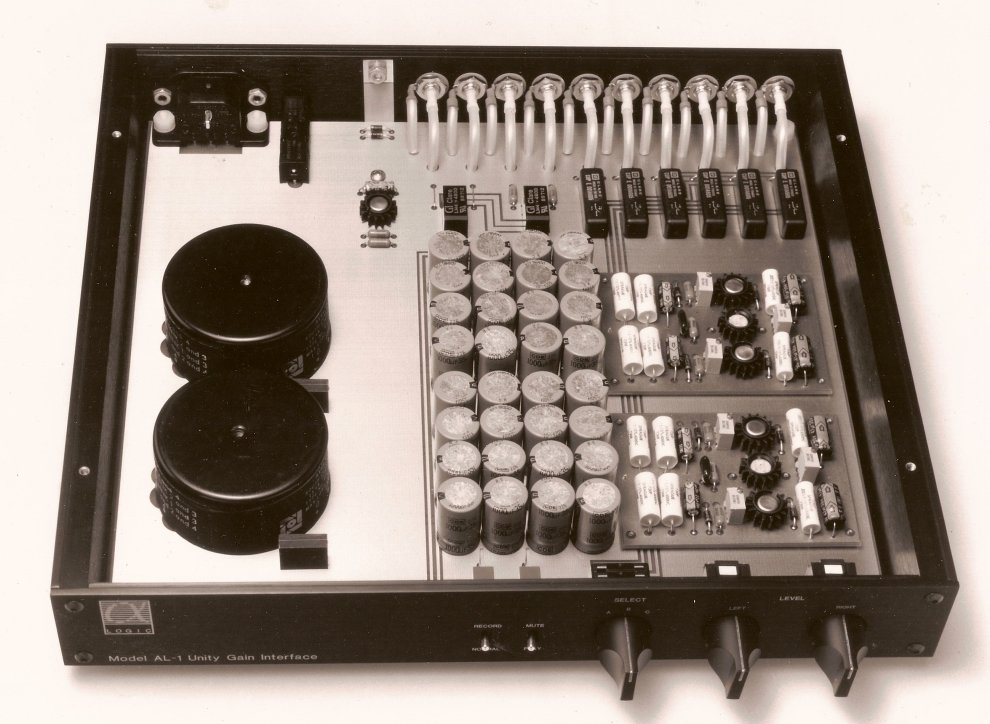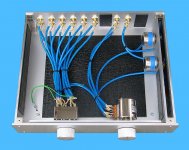Or was that, "A butt much ..."
Ooops. Sorry. Was supposed to be "A butt munch."
se
Yes, mil spec, 'clumsy, ham-fisted hardware'. You really don't know what you are talking about, SE.
Oh yeah, pull out the buzz words, John and the empty personal insult.
It's the IMPLEMENTATION that's "clumsy and ham-fisted."
You need a FOUR deck switch just to switch the polarity of TWO channels? Really, John?
Besides, I was referring to the multi position Shalco as the real problem.
What exactly do you mean by "the multi position Shalco"? You said "the quad Shalco switches are too deep." The only quad switch I see is the polarity switch, which is what I was talking about when I said "clumsy and ham-fisted."
So exactly what switch are you referring to?
se
![url]](/community/proxy.php?image=http%3A%2F%2F%5Burl%5Dhttp%3A%2F%2Fwww.diyaudio.com%2Fforums%2Fattachments%2Fanalog-line-level%2F342149d1365778231t-john-curls-blowtorch-preamplifier-part-ii-al1large.jpg%5B%2Furl%5D&hash=42c407ad7024213c472d1f8d8495bfa3)
I would suggest no 90 right angle turns on the traces
( rounded is preferred )
The electrons are quite capable of making the sharp turns. None of them ever spun out and went off the track.
se
Stricktly 2nd hand empirical knowledgeThe electrons are quite capable of making the sharp turns. None of them ever spun out and went off the track.
se
suggests otherwise ..........
Maybe not "off the track" , but 'deharmonized'
Now, SE let us look at your design. Unity gain, is it?
Yes.
Why all the caps, trying to impress somebody? Toroids? ICK!
I must confess that at the time I designed that over 20 years ago, I allowed myself to be swayed a bit by the prevailing "audiophile" wisdom. That multiple small caps in parallel were better than a single large value cap and that toroid power transformers were the greatest thing since sliced bread. Many of the "listening contest winners" at the time were doing the same things.
Standard power supply bridges?
Yup. I found them to work and sound just fine.
Just my humble opinion. '-)
Great. So why don't you comment on something that hasn't been out of production for over 20 years. I posted a current schematic some posts back. Comment on that if you'd like. It would at least have some relevance to today.
se
Last edited:
Stricktly 2nd hand empirical knowledge
suggests otherwise ..........
Maybe not "off the track" , but 'deharmonized'
No, not even that. They later went on to win the national Barber Shop Quartet competition.
se
It's not microstrip, stripline, or a co-planar waveguide carrying GHz signals, I think a 90 degree turn will be just fine.
Actually, the traces that Mike is referring to only carried DC control voltages for the relays.
se
I'm trying really hard to not let out a Beavis and Butthead giggle.
I'm not trying so hard.
Heh-heh-heh-heh, heh-heh-heh-heh. He said "shaft extender." Heh-heh-heh-heh, heh-heh-heh-heh.
se
I thought being able to buy one was a shaft extender.
The electrons are quite capable of making the sharp turns. None of them ever spun out and went off the track.
se
glad some of you found that diversion entertaining briefly, I know I did when typing it, all of the above went through my mind on the way down the gutter; I am but of feeble mind when it comes to humor. I got a good snigger going, i'm not too classy for Beavis. Erectile function, or dysfunction, its all good material.
Steve, perfect right angles without round or angle are also not strictly recommended for manufacture either, probably not as bad these days, or at this scale, but they were/are a no-no because they trap the developer/acid and PCB software will usually put a small bevel on the corner. not picking there, i'd say its not a problem, but my concern if any would not be about frequency content, much more basic than that.
for low noise analogue RF or clock traces curved traces are sometimes used, where flying off the corners is not so far fetched. or is it for noise, I cant remember.
Last edited:
SE, it appears that you don't appreciate 'constructive criticism'. Join the club! '-)
hmm, seemed a pretty unperturbed response to me on the whole, he didnt resort to Hi-End pouting or Sneering. Just his usual measure of sarcasm
Corey Greenberg
SE -
I'll have to go back and read the Aunt Corey article. Corey lived in Austin and was a buddy of a buddy. My buddy, who worked at the local hi-end shop, created his own version that uses a massive toroid and telecomm relays. I bought one from him and it's still in my setup to this day.
SE -
I'll have to go back and read the Aunt Corey article. Corey lived in Austin and was a buddy of a buddy. My buddy, who worked at the local hi-end shop, created his own version that uses a massive toroid and telecomm relays. I bought one from him and it's still in my setup to this day.
glad some of you found that diversion entertaining briefly, I know I did when typing it, all of the above went through my mind on the way down the gutter; I am but of feeble mind when it comes to humor. I got a good snigger going, i'm not too classy for Beavis. Erectile function, or dysfunction, its all good material.
I'm stealing the material forthwirh.
Nearly 100 posts since http://www.diyaudio.com/forums/anal...ch-preamplifier-part-ii-3794.html#post3449778, and we still haven't a punch line ... 
IF I can get a constructive word in to this discussion: Let's see what is GOOD about this passive design.
First: No AC in the Box
Second: Thick walls with added damping.
Third, Clean, direct design with first class volume control and pretty good looking switch.
Four:Wires are separated and not bundled.
If I had not worked on the Blowtorch project, I would have prefered a passive preamp much like this one.
First: No AC in the Box
Second: Thick walls with added damping.
Third, Clean, direct design with first class volume control and pretty good looking switch.
Four:Wires are separated and not bundled.
If I had not worked on the Blowtorch project, I would have prefered a passive preamp much like this one.
Attachments
JC mentioned iirc that the configuration with the 1k output termination of DMOS drains was particularly robust against loading-induced instabilities, and such circuits particularly useful for problematic line-driving applications like performance venues and their ilk. Note also that RFI/EMI induced into the output will be less likely to find its way to rectifying junctions, unless quite high-level.
Well its a double-edged sword isn't it. You may isolate the preamp output better but lose any damping against RFI/hum etc on the line, leaving it to have a field day on the power amp input.
And even in the total absence of RFI etc you'd still have the other disadvantages as in the page from Doug Self I showed before.
BTW Using a Blowtorch at performance venues??
jan
Four:Wires are separated and not bundled.
If I had not worked on the Blowtorch project, I would have prefered a passive preamp much like this one.
Would you switch sources' grounds in addition to hots?
Thanks as always,
Chris
Then don't use such a clumsy, ham-fisted solution for switching polarity.
se
Steve you should (ahem) read my editorial in Vol 5.
jan
- Status
- Not open for further replies.
- Home
- Member Areas
- The Lounge
- John Curl's Blowtorch preamplifier part II

